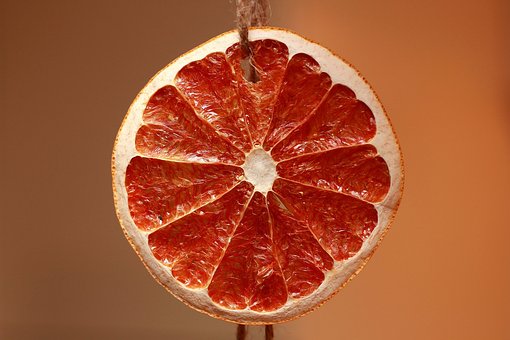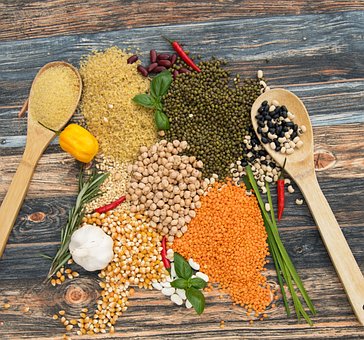5 Foods to Avoid with Kidney Disease and Diabetes
The kidneys are organs in your body that are responsible for a variety of crucial functions that contribute to your overall health. They help with the filtration of your blood, the elimination of waste, the synthesis of hormones, the preservation of healthy bones, the maintenance of fluid balance, and the management of your blood pressure.
Unfortunately, as time passes, your kidneys become more vulnerable to damage and, as a result, less effective. Kidney disease is the common name for this condition, and it affects approximately 10% of adults all over the world.
Diabetes is one of many lifestyle and health issues that can make you more likely to get kidney damage. Your blood vessels, especially those in your kidneys, may be affected if you have high blood sugar for an extended period. As a result, almost one in three individuals with diabetes also suffer from renal disease.
The different stages of kidney disease each have their dietary recommendations for those with diabetes and kidney disease. To maintain healthy kidney function, it is necessary to avoid the accumulation of a wide variety of substances, nutrients, and waste products in the blood.
People who suffer from diabetes and renal disease should be careful about how much sugar they consume, in addition to the minerals salt, potassium, and phosphorus.
Those who suffer from renal disease should generally keep their sodium intake under 2,300 mg per day. By their doctor’s advice, they should also keep an eye on their potassium and phosphorus consumption.
The most recent Kidney Disease Outcomes Quality Initiative (KDOQI) guidelines from the National Kidney Foundation do not address how much potassium or phosphorus can be consumed.
People who have kidney illness should also be careful about the amount of protein they consume, because the kidneys may have trouble filtering waste products produced during the metabolism of protein. On the other hand, individuals who have kidney disease that has progressed to its last stage could require a higher protein intake.
The severity of renal disease determines the specific nutritional requirements that patients with the disease must meet. Your healthcare provider as well as a trained dietitian will be able to provide you with advice on the amount of protein and other nutrients that are ideal for your body.
If you suffer from both renal disease and diabetes, you should steer clear of the following 5 foods.
1. Meat that has been processed.
Meats that have been dried, salted, cured, or smoked are examples of processed meats. These treatments improve the meats’ flavor, texture, and longevity.
As examples of processed meats, you may be familiar with bacon, deli meats, sausage, and jerky.
Processed meats have a high sodium level because they are usually salted. For instance, a typical serving of 3 ounces (85 grams) of bacon has an astounding 1,430 mg of salt, which is more than 62% of your daily sodium requirement if you have renal disease.
Foods that are high in sodium should be avoided by persons who already have renal disease or diabetes since eating too much sodium puts a considerable burden on the kidneys. Your blood pressure could increase as a result, and fluid could build up in your ankles, heart area, and lungs, among other places.
Choose lean, skinless pieces of meat such as chicken breast fillets, which have a lower salt content than processed meats, as your main source of protein. However, similar to other foods high in protein, you should consume them in moderation based on the stage of the renal disease you have.
2. Sodas with a dark coloration
People who have kidney illness and diabetes should avoid drinking sodas, particularly the dark-colored forms of this beverage.
Phosphorus, which is found in dark-colored sodas, is added to avoid discoloration, extend the shelf life, and enhance the flavor of the beverage. The majority of dark-colored sodas provide between 90 and 180 mg of phosphorus per serving size of 12 ounces (355 mL).
Although this may not seem like a lot in comparison to the maximum amount that should be consumed in a day, the form of phosphorus that is present naturally in meals is different from the type that is found in sodas. Because it is not attached to protein and instead exists in salt form, it can be more readily absorbed into your circulation than other substances.
When kidneys are healthy, they can eliminate excess phosphorus from the blood without much difficulty; however, this is not the case when the kidney disease is present.
If you have high blood phosphorus levels for a lengthy period, this can boost your risk of heart disease, cause bone loss, and increase the likelihood that you will die prematurely.
Drinks sweetened with sugar, such as soda and other sugar-sweetened beverages, also include a lot of additional sugar. Because diabetic patients’ bodies are unable to effectively manage blood sugar levels, this is not an optimal situation for diabetic patients.
If you have high blood sugar for an extended period, it can cause damage to your nerves, further damage to your kidneys, and boost your risk of developing heart disease.
Choose a beverage that is low in sugar and phosphorus such as water, unsweetened tea, or sparkling water that has been infused with sliced fruits or vegetables rather than drinking soda. Options include water, unsweetened tea, and sparkling water.
3. Fruits that are high in potassium
In general, fruits are good for you because they are loaded with various vitamins and minerals. However, diabetics and others who suffer from kidney disease may be advised to cut back on their consumption of some fruits, particularly those that are heavy in both sugar and potassium.
If you have kidney illness, your body won’t be able to remove potassium as effectively as it should, which can result in hyperkalemia, commonly known as elevated potassium levels in the blood. This disorder, if left untreated, can produce symptoms such as weariness and muscle weakness, as well as cardiac difficulties and even death.
Bananas, avocados, apricots, kiwis, and oranges are some examples of fruits that are rich in potassium.
For instance, a typical avocado (201 grams) has 975 milligrams of potassium, which is more than twice as much as a medium banana (118 grams) and over half of the daily potassium consumption that is recommended for those with kidney disease.
If your primary care physician or dietitian permits you, you might want to try cutting the portion size of these fruits down to one-fourth of an avocado, one-fourth of a banana, and so on. Because the amount of potassium a person needs and may safely consume varies from person to person, you should consult a medical professional or a nutritionist to establish your potassium requirements and restrictions.
If you’re watching your carb intake, you’re in luck since there are a lot of nutritious fruits with low potassium levels that you can incorporate into your diet in moderation. Apples, grapes, berries, pineapple, and mangoes, just to name a few, fall under this category.
4. Dried fruits
The removal of the fruit’s natural moisture content via a variety of methods results in the production of dried fruit. This results in the production of compact fruits that are high in both calories and minerals.
Because of the high levels of sugar and minerals like potassium that are found in dried fruits, they should be avoided by persons who suffer from kidney disease and diabetes.
A single half-cup serving of dried apricots (equivalent to 65 grams) provides around 755 milligrams of potassium.
Additionally, dried fruits contain a significant amount of sugar that is metabolized quickly, which is not suitable for diabetics.

5. The vast majority of beans and lentils
In most circumstances, beans and lentils are seen as being both convenient and good for one’s health.
However, due to the relatively large amount of phosphorus that is contained in canned and fresh beans and lentils, these foods should be avoided by individuals who suffer from kidney disease and diabetes. The salt content of canned versions is often high as well.
As an illustration, one cup (185 grams) of canned lentils has a potassium content of 633 mg and phosphorus content of 309 mg.
If you prefer beans and lentils, you can still consume them in moderation; however, you should not include them in your meal as a primary source of carbohydrates.
If you prefer beans and lentils from a can, look for varieties that have a reduced sodium content or are labeled “no salt added.” Also, older studies suggest that rinsing and draining canned foods can reduce the amount of sodium they contain by between 33 and 80 percent, depending on the type.
One more thing to think about is the amount of potassium that is absorbed by your body from the various kinds of food you eat. When compared to the up to 70 percent that can be absorbed from animal sources, plant sources of phosphorus only contribute 40–50 percent of the total.
There is additional evidence that diets high in plant-based proteins, such as legumes, whole grains, nuts, and seeds, may decrease the progression of chronic kidney disease (CKD). This is supported by the fact that these diets rely more heavily on these sources of protein.

